Ruminants
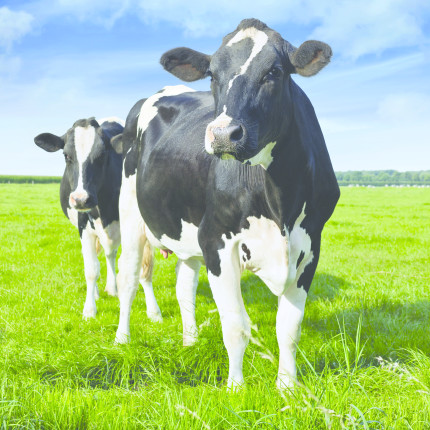
Why feed fat to ruminants?
Fat is an essential nutrient and sufficient amounts must be supplied in the diet to meet animal requirements. However, fat is also a unique nutrient which offers benefits not available from other nutrient sources such as starch and fibre.
Energy supply
The primary reason for feeding fats is as an energy source. Fat has the highest energy of all the nutrients available, containing around 2.5-times the energy concentration of cereals.
| Metabolisable energy | ||
| Feed | MJ/kg fresh | MJ/kg DM |
| Grass silage | variable | 9-12 |
| Sugarbeet pulp | 11.1 | 12.5 |
| Wheat | 11.7 | 13.6 |
| Maize | 11.9 | 13.8 |
| Molasses | 9.5 | 12.7 |
| Megalac | 31.6 | 33.3 |
500 g of Megalac rumen-protected fat supplies the same Metabolisable Energy (ME) as 1.35 kg of wheat
When to feed fat – increased energy density
Fat can be fed at any time but is particularly valuable where the demand for energy is high.
In early lactation, dairy cows are unable to eat sufficient feed to meet the demands for milk production and therefore use their own body fat as an energy source, resulting in ‘negative energy balance’ and a loss of body condition (‘milking off their backs’). Fat is an ideal supplement at this stage as the high energy concentration supplies more energy in every bite of feed.
Sheep, goats and beef cattle also benefit from fat as a highly-concentrated form of energy particularly during lactation or the finishing beef phase.
Energy without risk of acidosis
Starch-rich sources of energy such as cereals increase acid production which can lead to low rumen pH and development of acidosis. However, fat is not fermented in the rumen and enables energy supply to be increased without adding to the acid load in the rumen. Starch and sugar sources are fermented at differing rates in the rumen, producing acid, while fat is not fermented in the rumen and therefore does not lead to production of acid.
The speedometers below indicate the rapid rate of fermentation of sugar and starch sources compared to Megalac rumen-protected fat.
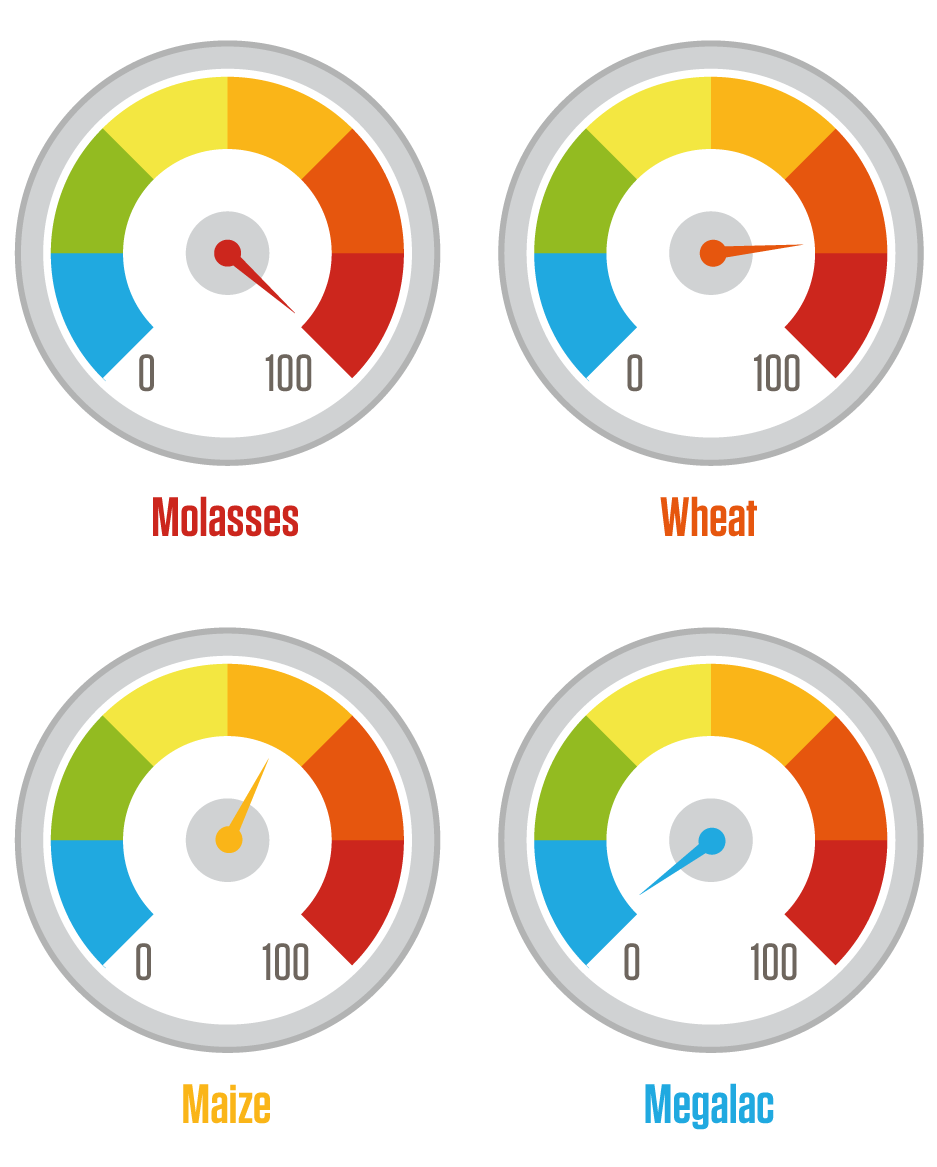
Fertility
Fat plays a key role in supporting fertility in ruminant animals and is essential to improve conception and pregnancy rate. Key benefits of fat for fertility include :
- High energy density aims to reduce body condition loss in early lactation dairy cows. As a guideline, conception rate falls by 10% for every 0.5 unit loss in condition score through early lactation (5-point scale).
- Fat increases progesterone – the key hormone of pregnancy. If progesterone production is too low, the animal will not hold a pregnancy.
- Some fat sources have been proven to improve the quality and viability of eggs at ovulation, leading to increased chances of successful pregnancy.
- Omega-3 fats can help to ensure pregnancy is maintained. Volac Wilmar’s Mega-Flax product is based on linseed and is a good source of omega-3 fatty acids.
Reduced methane and improved feed efficiency
Up to 12% of feed energy intake can be lost as methane gas, produced in the rumen as a result of fermentation of feed. As fat is not fermented, higher fat rations can reduce methane production leading to improved feed efficiency and reducing undesirable environmental emissions.
Heat stress
Digestion and conversion of feed to energy produces heat in the animal’s body which contributes to heat stress in hot climates. However, fat generates considerably less heat than all other energy sources and is often added to diets in hot temperatures as a nutritional method of reducing heat stress. Fat is a ‘cool’ ingredient.
How much fat is in diets?
Traditional forage/concentrate-based diets typically have a low fat concentration, around 3% of diet DM (dry matter) and only the by-product-type ingredients (or pure vegetable/fish oils) have higher levels of fat.
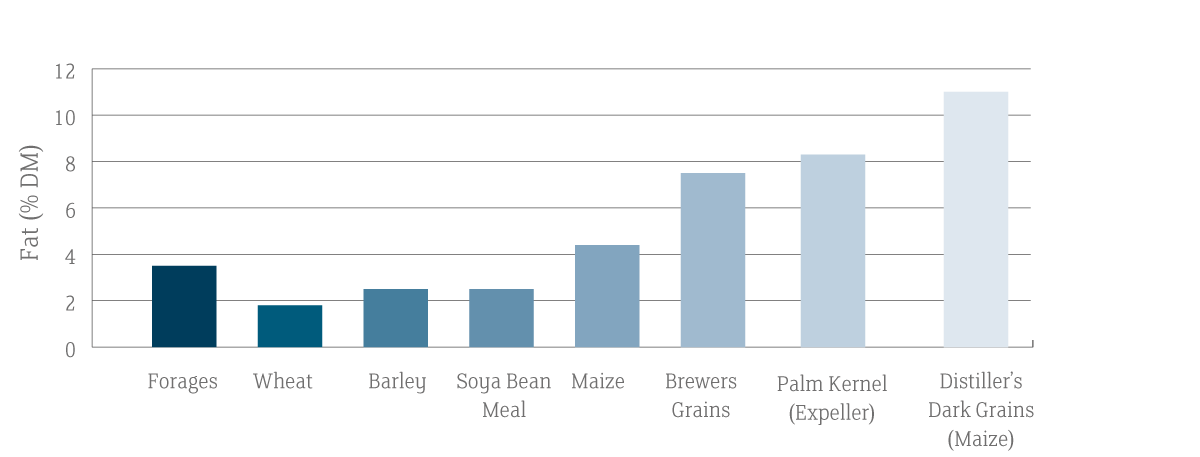
Increasing fat above the basal level can lead to problems in the rumen, including:
- Development of an oil ‘slick’ which prevents rumen bacteria from digesting fibre.
- Increased rumen-unprotected oil can kill rumen bacteria.
- Low milk fat.
Normal rumen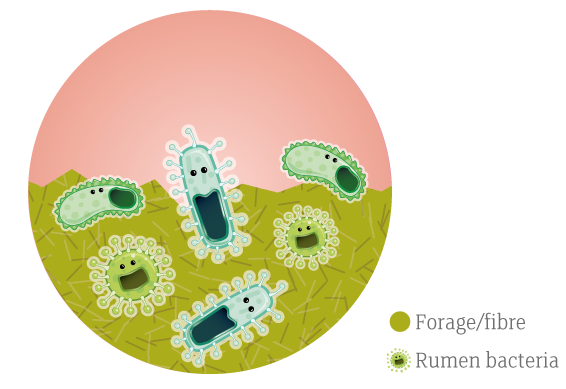
Unprotected oil in the diet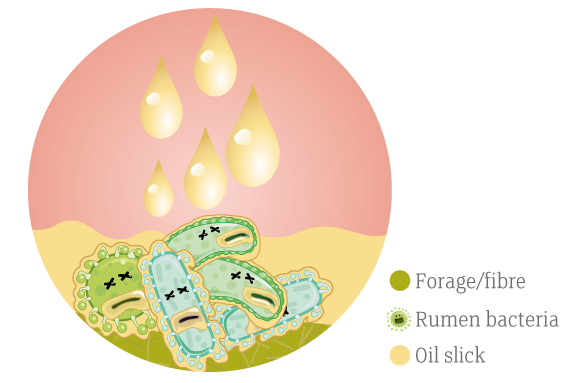
These problems can be reduced by use of rumen-protected fats.
Rumen-protected fats
Fat level in diets can be ‘safely’ increased by using rumen-protected fats. These fats avoid depressions in fibre digestibility and are available for digestion in the small intestine. 
Which rumen-protected fat to feed ?
The main types of rumen-protected fats available, and Volac Wilmar’s offering in each is summarised below. Most supplements are suited to beef cattle and other meat-producing animals, while the choice for dairy cows and other milk-producing animals is more-dependent on what the objective of the diet or target farm is.
| Fat type | Method of rumen protection | Main fatty acids (typical) | Key benefits | Volac wilmar product |
| Calcium salt | Insoluble in rumen | C16:0, C18:1 | More milk, better fertility | Megalac |
| High-C16 | High melting point | Typically > 80% C16:0 | More milk fat | Mega-Fat range |
| Hydrogenated | C16:0, C18:0 | More milk and milk solids | Mega-Energy | |
| Triglyceride-based | C16:0 | More energy for production | Mega-Boost |
Contact Volac Wilmar for advice on which fat is appropriate for your farm.
How much fat to feed
Basal forage concentrate rations will typically supply around 3 to 3.5% fat in the DM (dry matter) and additional requirements depend on the energy needs of the animal and what the diet is designed to achieve. Guidelines for amount of fat to feed for dairy cows:
- High yielding dairy cows may require 6-8% fat in the diet dry matter
- 15-20% of the ME (metabolisable energy) of a dairy cow’s diet should come from fat
- A general ‘rule of thumb’ for dairy cows is that the amount of fat to feed should equal the amount of fat the cow produces in her milk (for cows not losing or gaining body condition)